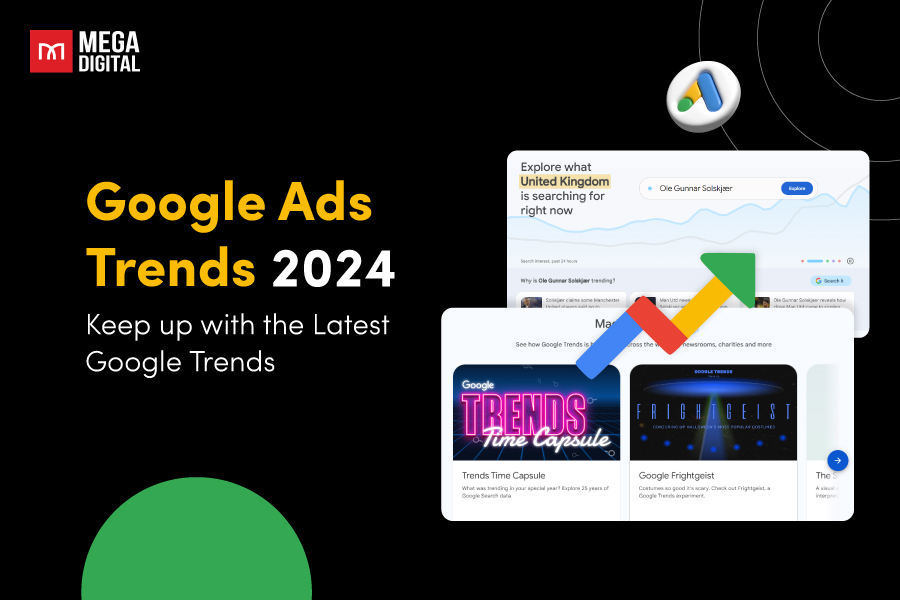Curious about what print on demand is and how it can transform your business? Whether you’re a seasoned entrepreneur or just starting, POD allows you to sell custom products without the hassle of inventory or upfront investment. Let’s dive into how POD works and what it takes to succeed!
What Is Print on Demand?
Print on Demand (POD) is a business model where products, typically custom designs, are printed only after a customer places an order. Consequently, this approach eliminates the need for inventory and upfront costs.
Furthermore, common POD items include t-shirts, mugs, phone cases, and posters, which can be easily personalized with unique designs or branding.
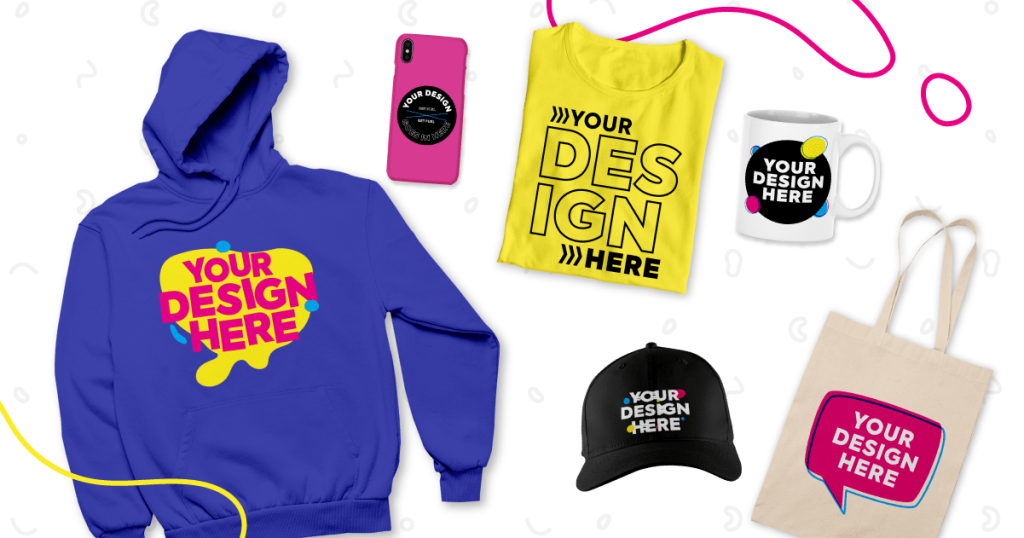
Print on Demand: Pros And Cons
Now that you understand what POD is, let’s explore some advantages and potential challenges to see if this model suits your business.
Pros
When it comes to the benefits, POD offers several key advantages that make it an attractive option for e-commerce entrepreneurs, such as:
- Low Startup Costs: With POD, you don’t need to invest in large quantities of products upfront. Instead, you only pay for production when a customer places an order, significantly reducing your financial risk.
- Low Risk: Since products are only printed after a sale is made, there’s no risk of overstock or wasted inventory. This feature is a huge advantage for businesses with limited cash flow.
- Global Reach: Most POD platforms have fulfillment centers around the world, which allows you to offer international shipping without handling complex logistics or cross-border taxes yourself.
- No Inventory Management: The POD provider takes care of all about storing products, managing stock levels, and handling fulfillment so you won’t have to worry.
- Wide Range of Products: POD platforms offer a variety of customizable products from T-shirts and mugs to more niche items like phone cases or canvas prints; therefore, you can easily test new products without upfront costs.
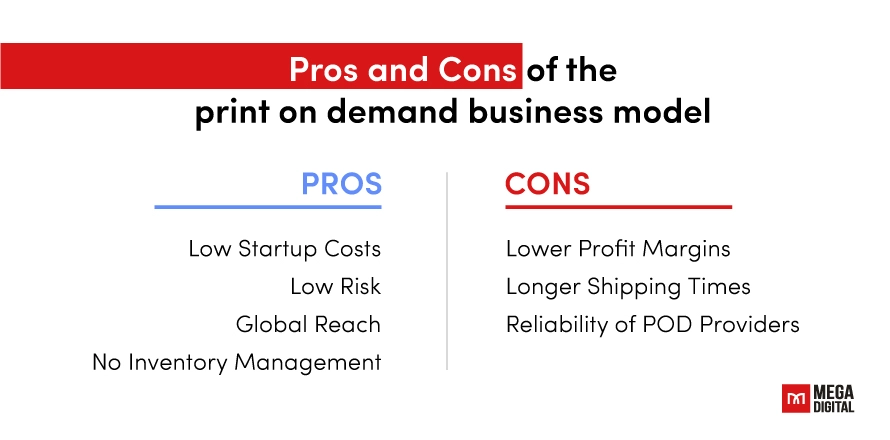
Cons
While POD offers an easy and cost-effective way to launch a custom product store, it also comes with a few trade-offs.
- Lower Profit Margins: POD providers handle production and shipping, which means higher per-unit costs. As a result, your profit margins will be smaller compared to bulk-ordering products.
- Longer Shipping Times: Because the products are made to order, the production and shipping process can take longer, which means customers may have to wait longer than they would from a traditional retailer with pre-made stock.
- Reliability of POD Providers: Your business relies heavily on your POD provider because they handle critical aspects like production, shipping, and quality control. If they experience delays or fail to meet quality standards, it directly affects your customers’ experience.
How Print on Demand Works
Now that you understand the POD overview, let’s dive into how the process works. Understanding the steps involved will help you make the most of this business model and ensure smooth operations.
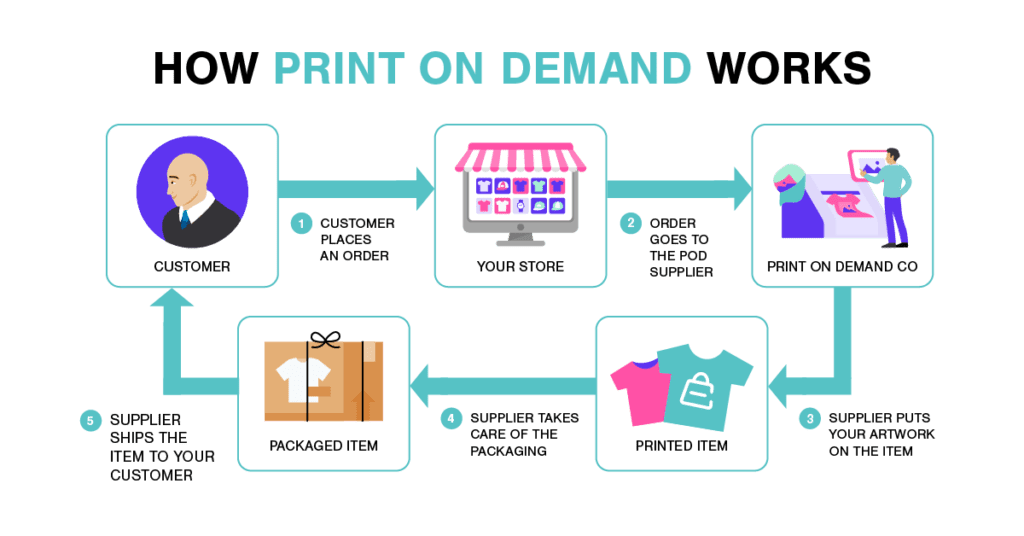
Choosing a Provider
To start, picking the right POD provider is essential for a smooth operation. Platforms like Printify, Printful, and Teespring each have unique strengths.
For example, if you need a wide range of products such as apparel, phone cases, or home decor, you need to ensure the provider offers enough variety to meet your audience’s preferences.
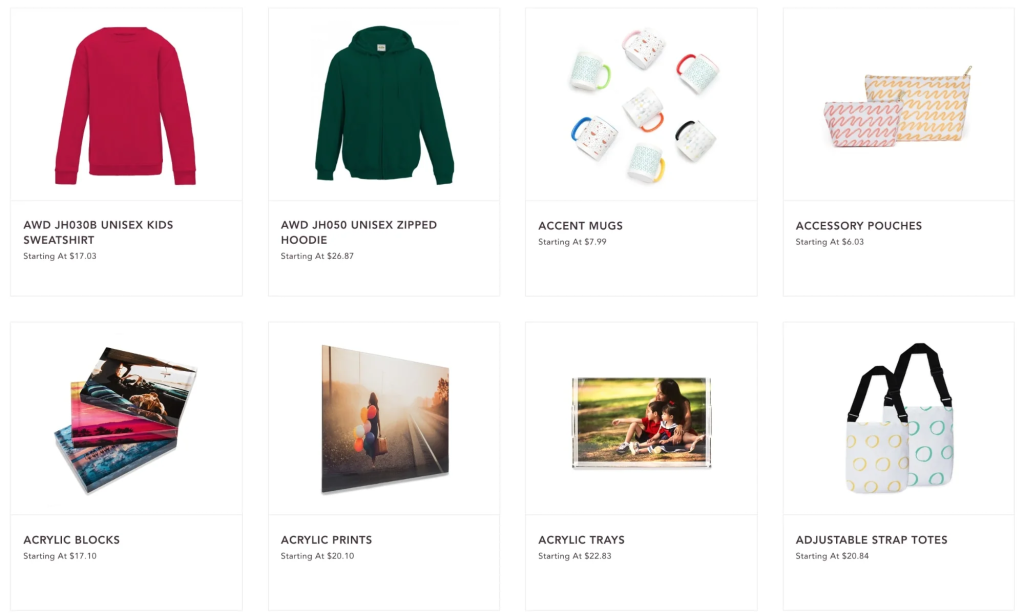
Additionally, selecting a provider with warehouses near your target market will help reduce shipping times and costs, which is crucial for customer satisfaction.
And, don’t forget to compare production costs and shipping rates so you can price your products competitively while maintaining solid profit margins.
Lastly, make sure the platform integrates seamlessly with your store, especially if you’re using Shopify, Etsy, or Amazon, to avoid unnecessary technical headaches down the road.
Selling Products
Once you’ve locked in a provider, it’s time to get your products ready for sale.
Start by uploading your custom designs to the platform. Most providers offer mock-up generators, so you can see exactly how your design will look on various products and visualize the final result.
Then, when setting your prices, remember to strike a balance: if you price too high, you’ll risk turning away customers, but pricing too low might eat into your profits.
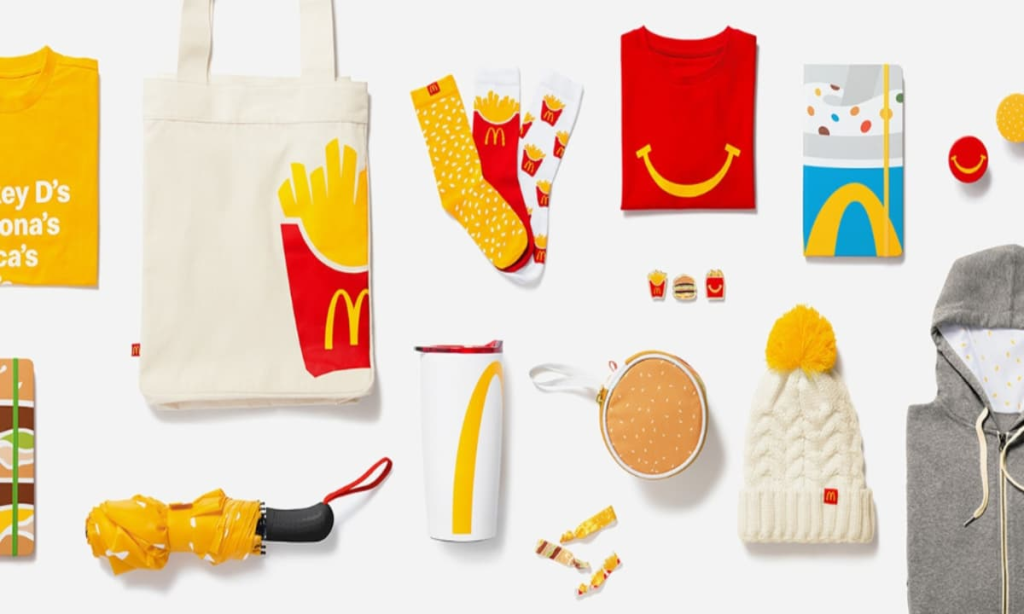
After finalizing your product listings, focus on writing compelling descriptions and uploading high-quality images since these two factors can significantly influence whether a customer clicks “buy” or keeps scrolling.
Order Fulfillment
Once a customer places an order, the fulfillment process is mostly automated. The order is sent directly to your POD provider, who handles printing, packaging, and shipping, which takes a lot off your plate.
However, you’ll still need to monitor shipping timelines, as these can vary depending on the provider’s location and production schedule so make sure you share tracking info with your customers to keep them informed.
Even though you don’t control the fulfillment process, you are still the first point of contact for customer support, so be prepared to handle any inquiries or issues that come up post-purchase to ensure your customers feel valued and taken care of, even after the sale.
What Products to Choose for POD?
Joining the POD journey is exciting, but it can also feel a bit overwhelming if you just picking random products. So, let’s break down some standout categories to consider for your POD store.
#1 T-shirts and Hoodies
Let’s kick things off with the classics: T-shirts and hoodies. These timeless essentials are popular for a reason: they’re versatile, comfortable, and appeal to just about everyone. With countless styles, colors, and cuts available, you can easily find the right fit for your audience.
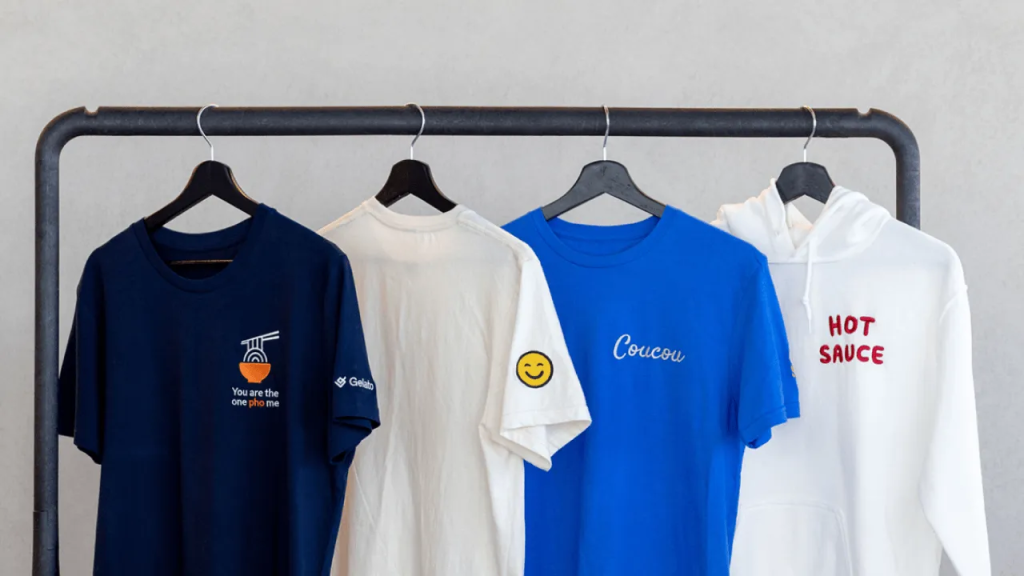
If you’re designing for kids, bright, fun colors like red, yellow, and orange will always catch their eye. If you’re catering to women, offering items like a Women’s Fashion Fit T-Shirt or a Unisex Heavy Blend Hoodie can be a hit. And when people fall in love with a hoodie, they’re often willing to splurge a little extra because they know it’ll last.
The best part? T-shirts and hoodies aren’t just popular, they have a high repeat-purchase rate, meaning customers will come back for new designs.
#2 Hats
Next up, hats. They might seem like a small addition, but hats are incredibly versatile. From beanies and snapbacks to bucket hats, there’s a style for every season and occasion.
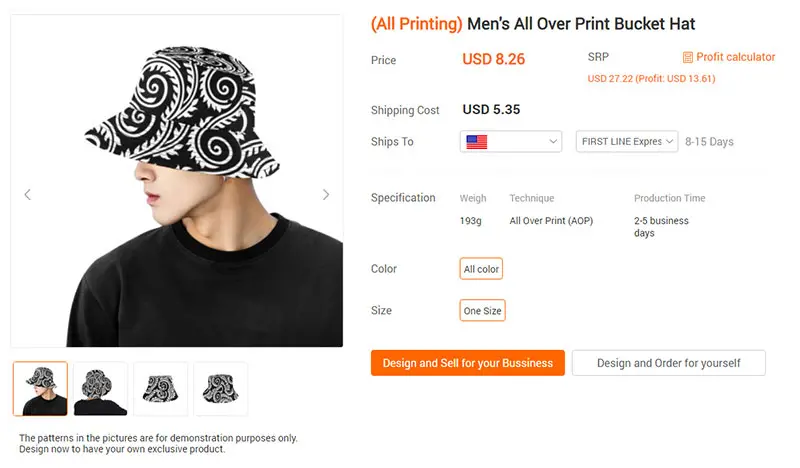
Here are some popular options you might consider:
- Baseball Caps: A timeless classic, these caps stand out beautifully with custom embroidery, making them a great choice for a polished look.
- Beanies: Ideal for colder seasons, beanies offer a cozy and stylish option that customers love to wear casually.
- Bucket Hats: Making a fashionable comeback, bucket hats attract a retro-loving crowd and are perfect for sunny days.
#3 Shoes
Now, let’s talk shoes – a less common POD product, but one that can really elevate your brand. By offering shoes like slides, flip-flops, or high-tops, you can set your store apart. Shoes can also tie an entire outfit together, giving customers a reason to buy multiple items.
Here are some great shoe options commonly used for Print on Demand:
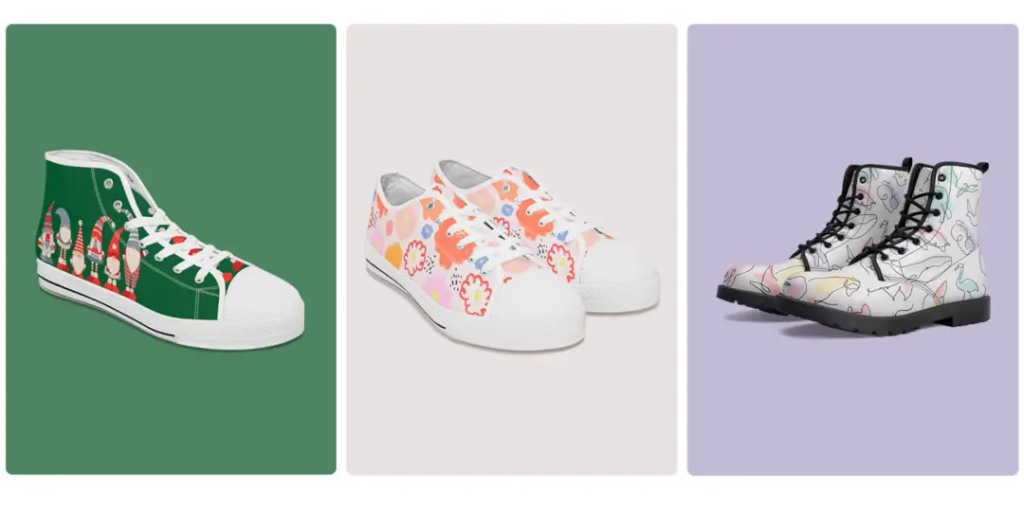
- Slides: Perfect for casual, everyday wear, making them a hit during warmer months.
- Flip-Flops: Ideal for summer or beach-themed stores, offering lightweight comfort.
- High-Tops: These sneakers are great for streetwear brands, adding a bold fashion statement.
- Low-Top Sneakers: A versatile option that works well with a variety of outfits and appeals to a broader audience.
#4 Kids & Youth Apparel
If you’re targeting families, kids’ apparel is a no-brainer. If you’re aiming to attract families, adding kids’ apparel to your store is a smart choice. Parents love finding fun and comfortable clothing for their little ones, especially matching outfits for the holidays.
And if you can create matching outfits for the whole family, especially during the holidays, you’ve got a winning combo.
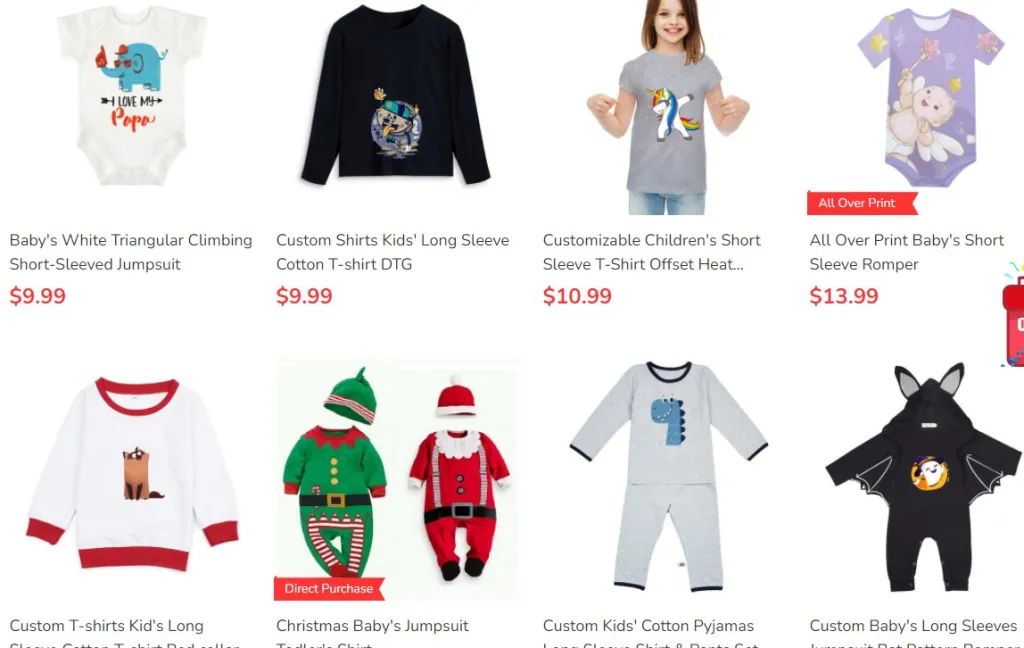
I have some great options for you to consider:
- Hoodies: Cozy and easy to wear, hoodies provide warmth and allow kids to express their style with fun designs.
- Leggings: Comfortable and versatile, leggings are ideal for active kids, providing freedom of movement during playtime and sports.
- T-shirts: A wardrobe staple, T-shirts are easy for kids to put on and showcase their personalities with various designs.
- Jackets: Essential for cooler weather, jackets keep kids warm while being stylish and durable for active play.
#5 Eco-friendly Products
Sustainability is no longer just a trend, it’s a priority for many shoppers. The benefit here is two-fold: you’re doing good for the planet while appealing to a conscious audience willing to pay a little extra for sustainable options. And, with the POD model, you’re minimizing waste by producing only what’s ordered, making your business even greener.
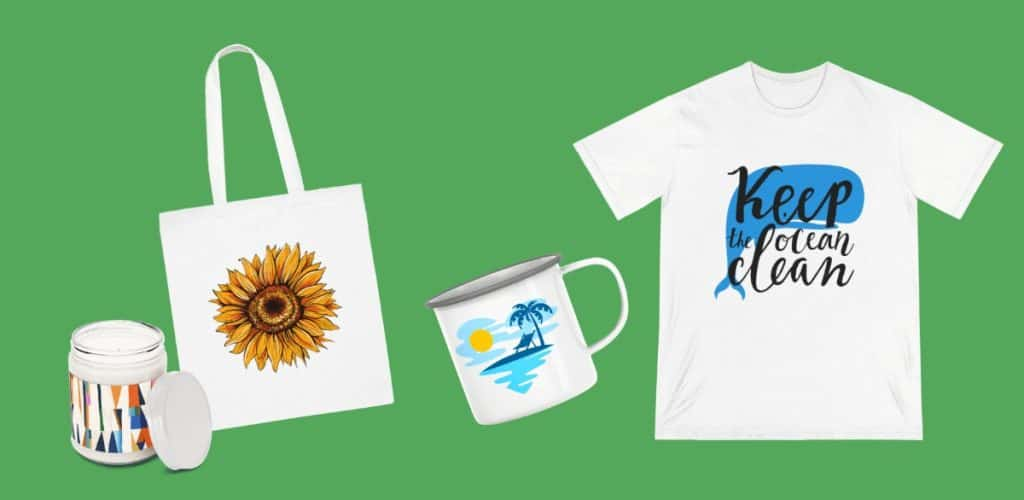
You can take some of these choices for POD:
- Organic Cotton T-shirts: Soft, breathable, and made from sustainable materials.
- Reusable Tote Bags: A practical option for shoppers who want to reduce waste when shopping.
- Recycled Fabric Backpacks: A stylish and eco-friendly choice for daily use.
- Reusable Water Bottles: Popular with eco-conscious consumers looking to cut down on plastic.
#6 Accessories
These items are also perfect for upselling. Accessories like bags, phone cases, and hair accessories may seem like small additions, but they can have a big impact on your store.
Additionally, accessories are typically low-cost to produce but can be sold at a higher markup, making them a profitable and strategic choice for your store.

Let’s take a look at what you can choose for your POD lineup:
- Phone Cases: Always in demand due to frequent new phone models, they allow customers to showcase their personality while protecting their devices.
- Tote Bags: Stylish and functional, tote bags are perfect for everyday use—great for shopping, gym trips, or beach outings.
- Hair Accessories: Fun and affordable, these items appeal to both kids and adults, adding a playful touch to any outfit.
- Laptop Sleeves: With remote work on the rise, sleek laptop sleeves are essential for protecting devices while making a fashion statement.
#7 Home & Living Decor Items
Finally, don’t overlook the home decor category. The best part about home decor is the cross-selling potential. For example, if someone is eyeing a pillow, chances are they’ll also want a matching blanket to complete the look.

So, take a look at these in-demand home decor items:
- Throw Pillows: They add personality and comfort to any room, allowing customers to easily refresh their decor.
- Blankets: Cozy essentials that complement pillows, and blankets provide warmth and aesthetic appeal, perfect for snuggling or decorating.
- Mugs: A year-round favorite, mugs are functional and make great gifts, featuring endless design options that cater to various tastes.
- Wall Canvases: Unique artwork helps customers express their individuality and transform blank walls into personalized statements.
Tips to Start with Print-on-Demand
Getting started with print-on-demand can be a smooth process if you have the right strategy in place. In this part, I will give you some essential tips to help you kick off your POD business:
Use a Print-on-demand App
Using a reliable POD app like Printful or Printify is essential for streamlining your operations. These apps connect your store to print providers, automating orders, production, and shipping. For instance, if you’re running a Shopify store, Printify can sync with your designs, sending orders directly to print providers as soon as a customer makes a purchase.

By choosing a provider with fulfillment centers near your target audience, such as U.S.-based print facilities for U.S. customers, you can reduce shipping times and costs, which directly impact customer satisfaction.
Identify a Target Market
Identifying your target market is crucial for a successful POD business. Instead of targeting broad categories, it’s important to narrow it down to specific niches.
For instance, rather than simply appealing to “eco-conscious shoppers,” focus on individuals who actively seek sustainable fashion made from organic materials, like organic cotton T-shirts.
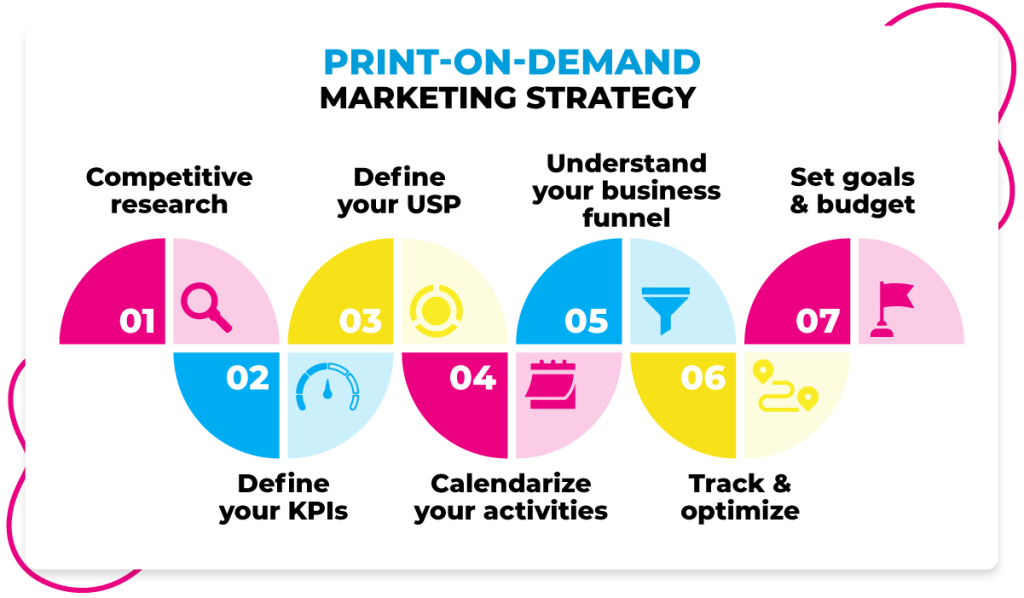
Furthermore, you can use tools like Facebook Audience Insights or Google Analytics to validate your market. If you discover that a significant segment is interested in fitness, you can tailor your products accordingly by offering custom activewear featuring motivational quotes.
Additionally, creating a product line that aligns with your niche ensures a strong emotional connection with your audience.
Order Samples
Before you launch your products, ordering samples is a must. This ensures that the print quality, materials, and overall product presentation meet your standards. You might find that one print provider offers a softer fabric or sharper printing on specific products.
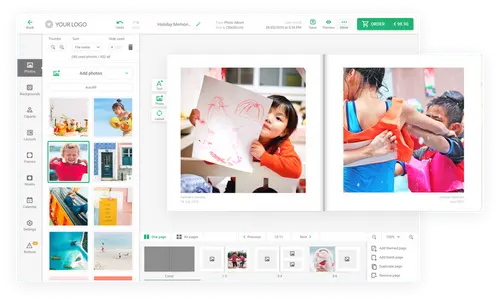
For example, if you’re selling custom hoodies, you can test several providers to compare fabric thickness, color vibrancy, and how the designs actually look on the final product.
Having samples on hand also lets you take personalized product photos, which can give your store a more professional, authentic feel since customers trust stores that show the real product instead of relying on default mockups.
Create Customized Products Mockups
Using customized product mockups is a smart way to give potential buyers a clear visual of what your designs will look like on different items. Most POD platforms provide built-in tools to generate mockups, but you can take it a step further by customizing those mockups to match your store’s style.
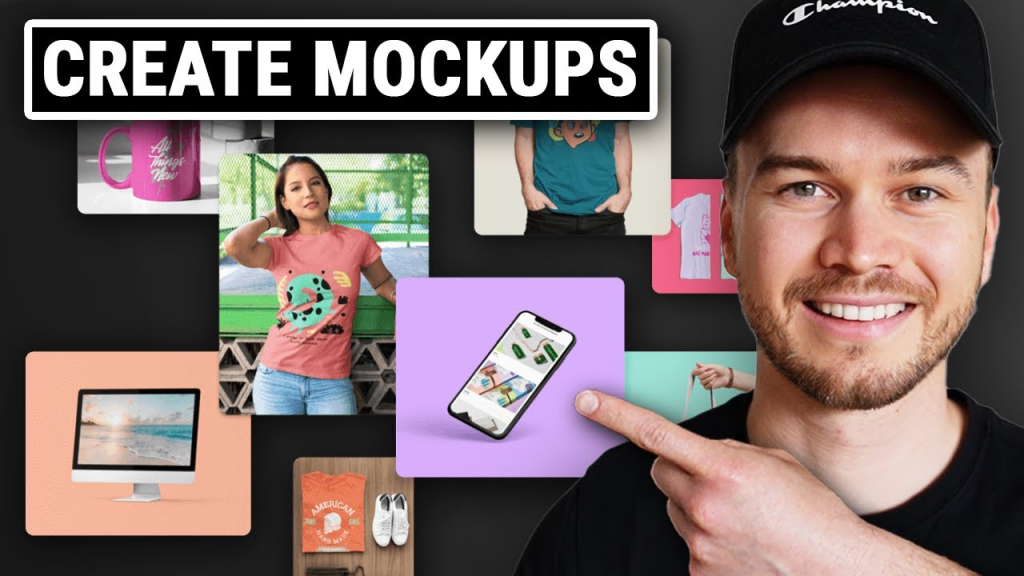
For instance, if you’re selling custom-designed tote bags, creating mockups that show the bag in real-life scenarios like being used at the beach or in a market will help customers visualize the product in use and increase the chances they’ll buy.
In addition, mockups are great for marketing materials. You can use them on social media or in email campaigns to showcase new designs or seasonal collections.
Consider Shipping Options
Shipping can make or break a customer’s shopping experience, so it’s important to carefully consider your POD platform’s shipping options. Different providers have different delivery times and costs, so you’ll need to balance speed with affordability.
If most of your customers are in the U.S., choosing a U.S.-based provider is a smart move to cut down on shipping times. On the other hand, if you’re targeting a global audience, make sure your provider offers affordable international shipping without excessive delays.
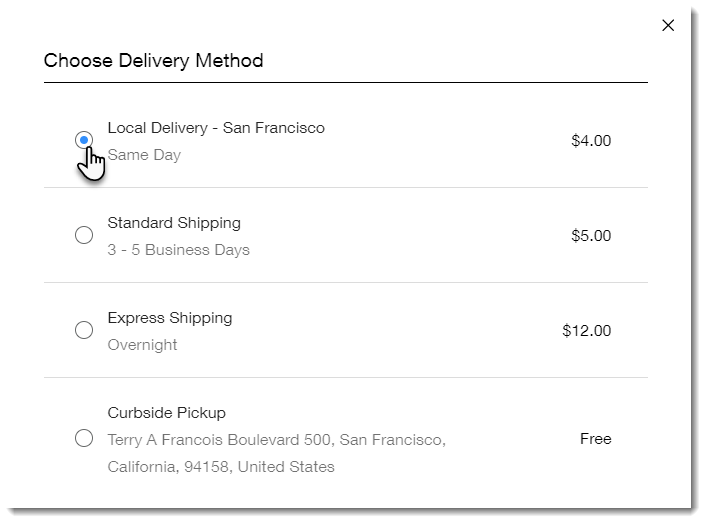
For example, if you’re using Printify, they offer multiple providers across different regions, allowing you to select one that best fits your market’s location. Offering free shipping or being transparent about delivery times can also improve your conversion rates, as customers prefer stores that are clear and upfront about these details.
How to Promote Your POD Store?
After getting started, promoting your POD store is crucial to attracting customers and driving sales. Here are some effective strategies to help you elevate your store’s visibility and connect with your audience.
Optimize Your Store
First off, your website should be a welcoming space where customers feel at ease. You need to make sure your product descriptions are engaging and include keywords that people might use when searching for items like yours.
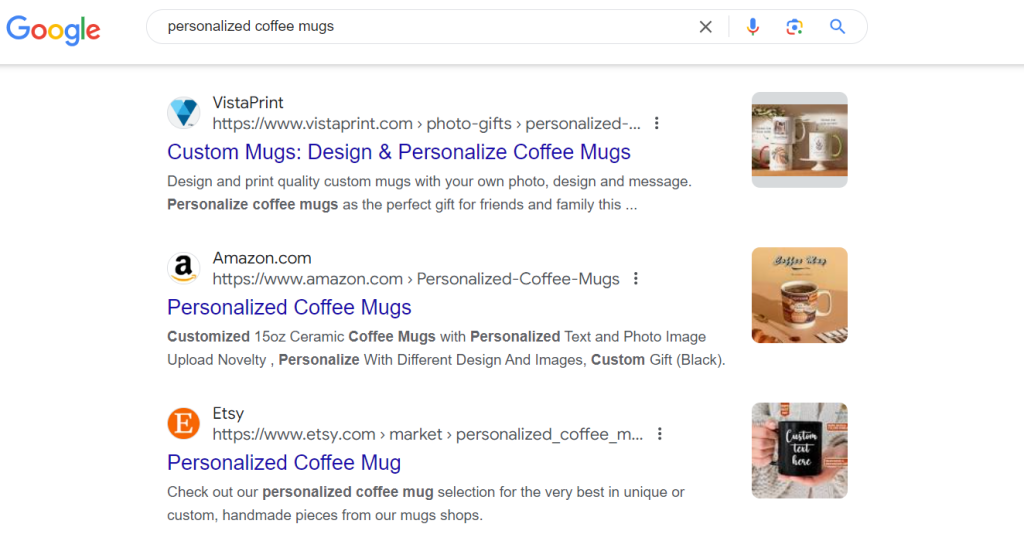
For instance, if you’re selling custom mugs, phrases like “personalized coffee mugs” or “quirky tea mugs” can help your store show up in searches. And remember, high-quality images are your best friend!
Besides, bright and clear photos of your products can draw customers in and make them more likely to hit that “buy” button.
Build Your Online Presence
Building your online presence is not just about having a store; it’s about creating a community around it. Specifically, you can use social media platforms like Instagram and Pinterest, where your target audience hangs out.
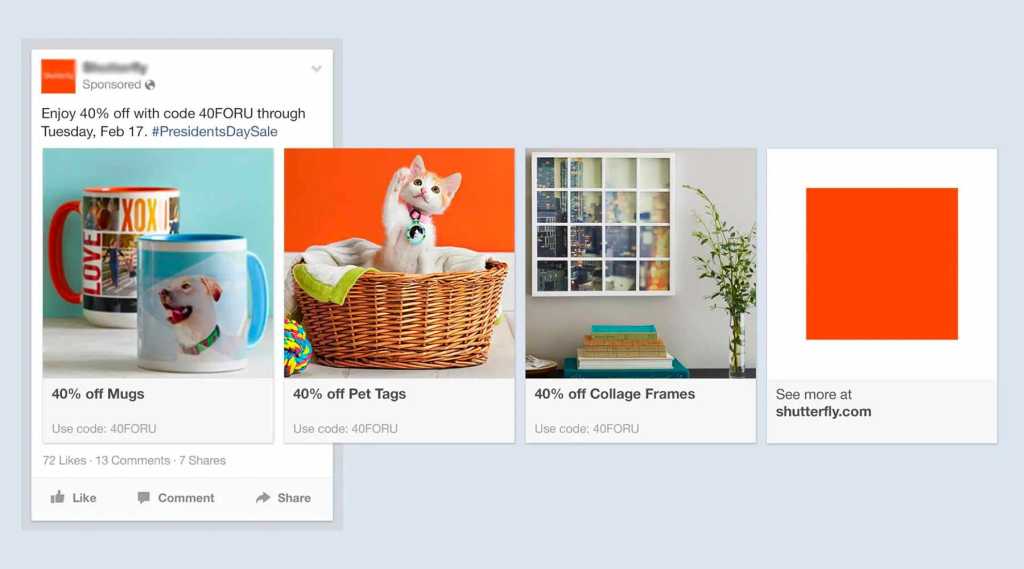
For example, consider sharing fun content in the form of memes, gifs, or infographics that showcase your products. You can think about behind-the-scenes shots, customer testimonials, or even styling tips on how to use your items.
The goal of this strategy is to connect with your audience on a personal level. Ultimately, when they see the heart and creativity behind your brand, they’ll be more inclined to support you.
Use Paid Advertising
Paid advertising can significantly expand your reach quickly. Platforms like Facebook Ads and Instagram Ads enable you to create targeted campaigns based on user interests and demographics.
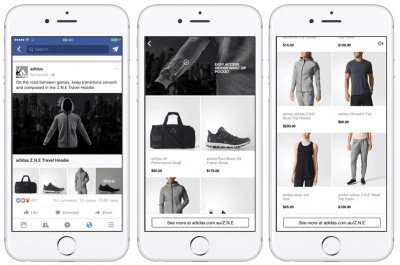
For instance, if you sell eco-friendly apparel, you can target users who follow sustainability-related pages or show interest in organic products. Google Ads allows you to focus on keywords like “sustainable clothing” or “eco-friendly apparel,” ensuring visibility when potential customers search for these terms.
This strategic targeting can boost traffic and improve sales conversions. If you need expert guidance on effective PPC campaigns, contact Mega Digital to maximize your advertising efforts and grow your business!
Collaborate with Influencers
Don’t overlook the power of influencers! Partnering with the right ones can boost your store’s visibility and credibility within a short time. You can start by finding micro-influencers with engaged audiences that match your brand.
For example, if you sell fitness gear, look for fitness enthusiasts on Instagram or TikTok. Reach out with a friendly message, sharing why you admire their work and suggesting a collaboration.
>>> Read more: TikTok Ads: How to Master Advertising on TikTok in 2024?
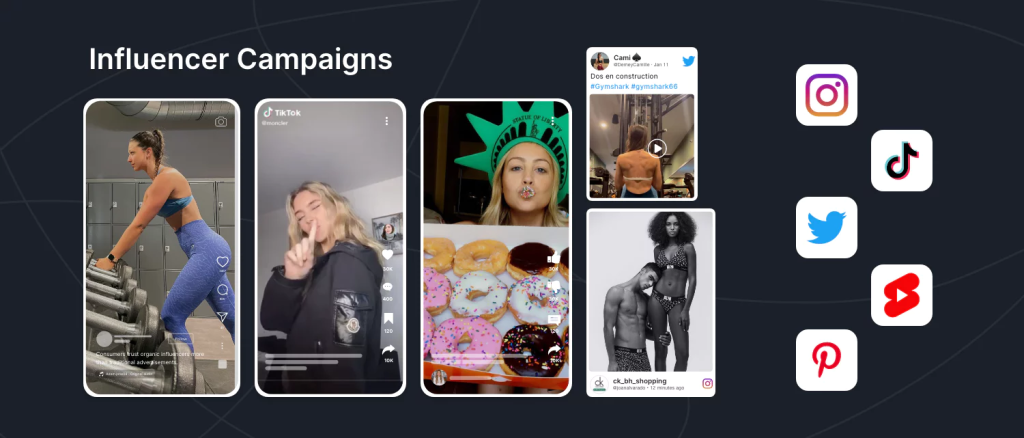
You can send them free samples in exchange for honest reviews or features or ask them to create workout videos using your gear and tag your store. Additionally, consider hosting giveaways where followers must follow both accounts for a chance to win.
Host a Contest or Giveaway
Lastly, hosting a contest or giveaway is a great way to generate buzz around your store.
At the beginning, select a custom item from your collection as the prize. Then, outline simple entry rules: ask participants to follow your social media accounts, share your contest post, and tag friends for a chance to win.
To make the most of it, don’t forget to promote your contest with eye-catching graphics on Instagram, Facebook, and TikTok, using relevant hashtags to reach a wider audience.
How to Choose a Print-On-Demand Provider
Choosing the right POD provider can make or break your business, so it’s important to pick carefully. Here are some factors that you should look for while choosing your POD provider:
Check Product Quality
To ensure high quality, always order samples from potential POD providers before you start selling to test the print quality, fabric durability, and fit.
Remember that a great POD provider will deliver products that maintain their quality after multiple washes.

For example, if you’re offering custom t-shirts, check if the print is vibrant, the fabric feels durable, and the fit remains after washing.
Cheap or poorly made products can lead to bad reviews and returns, which will hurt your reputation. So, make sure the products meet your standards from day one.
Analyze Pricing and Profit Margins
Next, take a close look at the provider’s pricing structure. Each POD provider has different costs for their products, shipping, and any extra features like embroidery or custom tags. You’ll need to factor these into your final price and ensure you’re left with a healthy margin.
To make sure you’re pricing your Print on Demand products for profitability, you need a clear formula. You can use this quick calculation:
- Total Cost = Product Cost + Shipping + Fees
- Profit = Selling Price – Total Cost
- Profit Margin = (Profit / Selling Price) * 100
By keeping this formula handy, you’ll be able to quickly adjust your pricing strategy and ensure you’re not just breaking even, but actually making a profit and avoiding the common mistake of underpricing.
Review Integrations with E-commerce Platforms
A smooth integration with your e-commerce platform is essential to streamline order processing, inventory management, and shipping. Therefore, you should choose a provider that integrates easily with platforms like Shopify, Etsy, or WooCommerce, so you don’t spend unnecessary time manually processing orders.
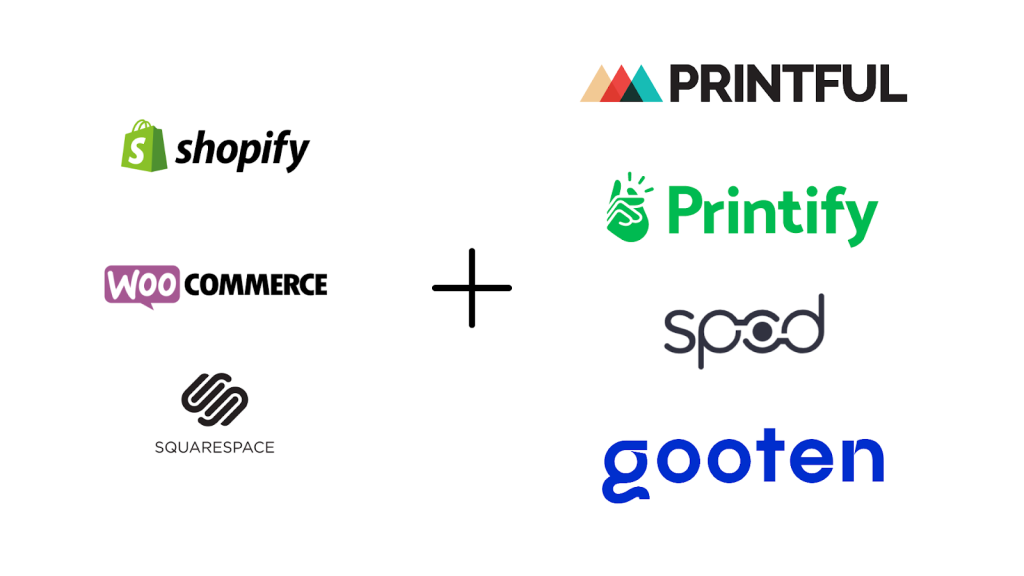
For example, if you’re using Shopify and Printful, the integration between these platforms is seamless. You can sync your product listings, automate order fulfillment, and even have Printful handle shipping directly to customers.
If you run a campaign that sells out quickly, you won’t need to manually track each sale or ship each item yourself. Everything happens in the background, leaving you to focus on marketing and growing your business.
Wrap Up
So there you have it! I’ve given you the full picture of what print-on-demand is and how it can work for your business. With minimal risk and no need for inventory, it’s a flexible way to get started or expand in e-commerce. Now that you understand the basics, you’re ready to explore POD and make it a key part of your strategy!









